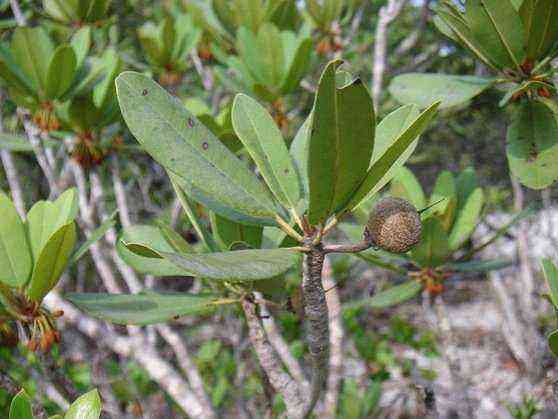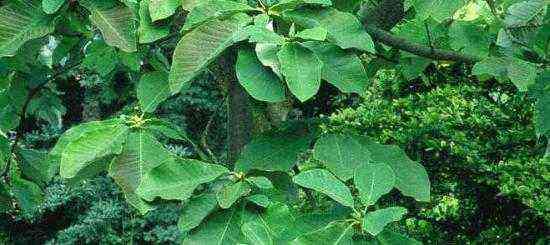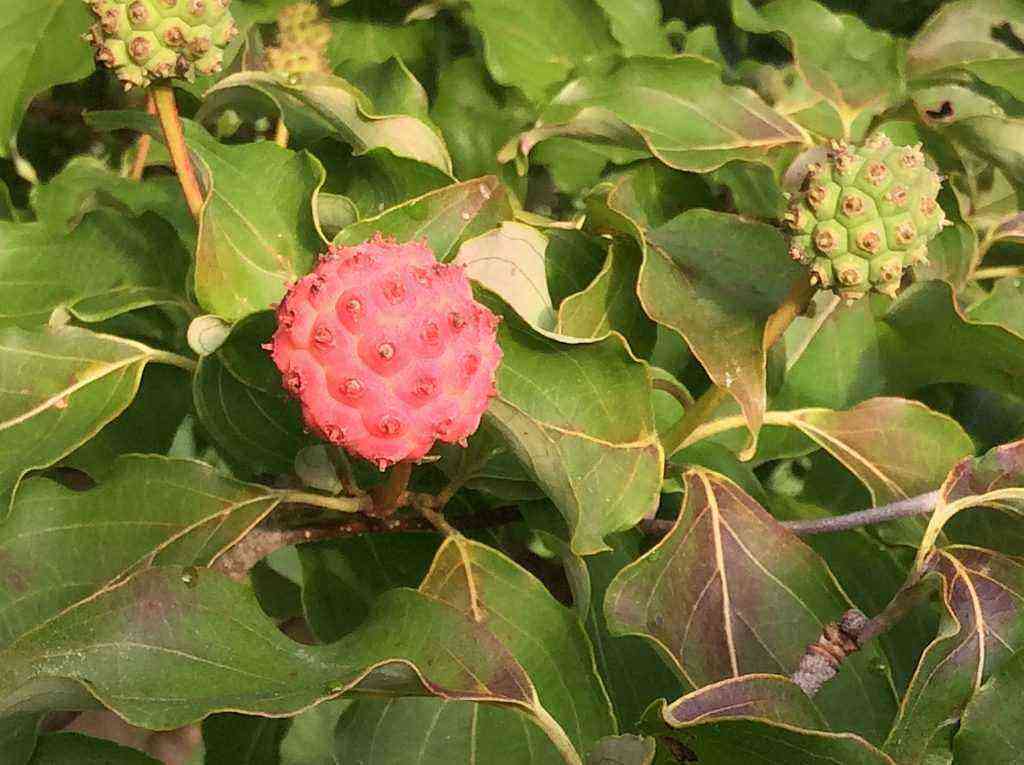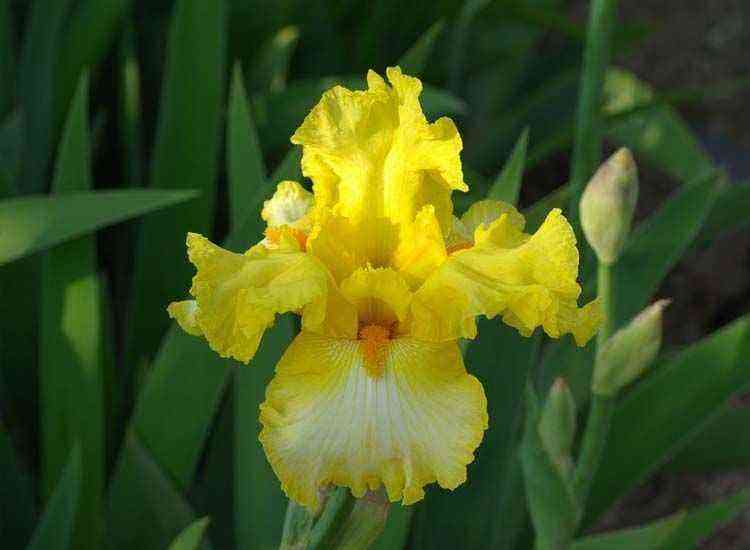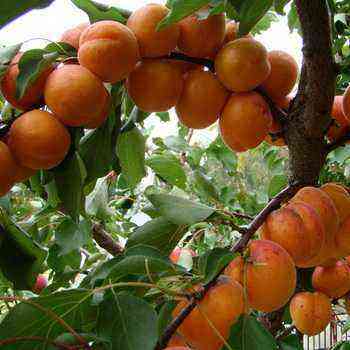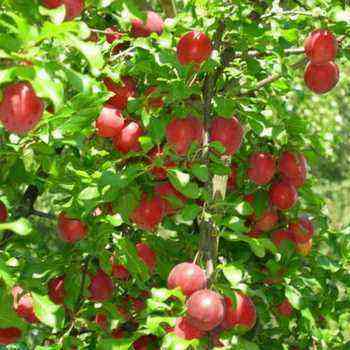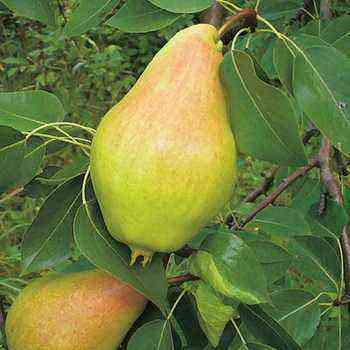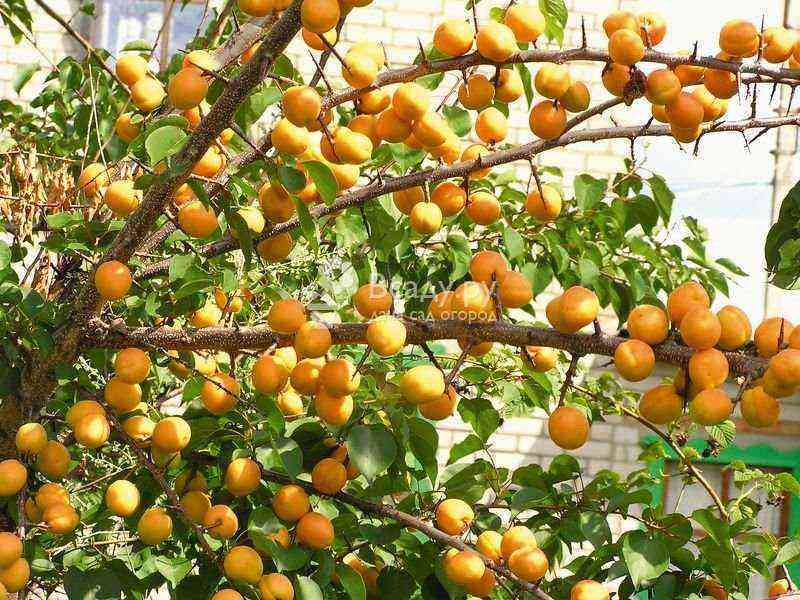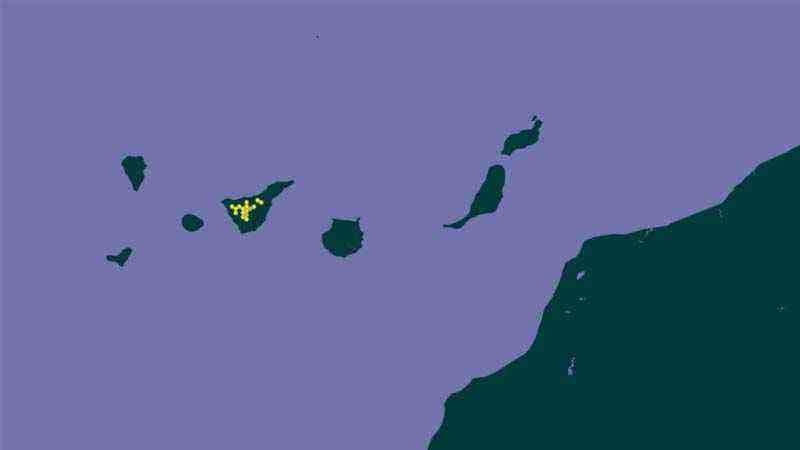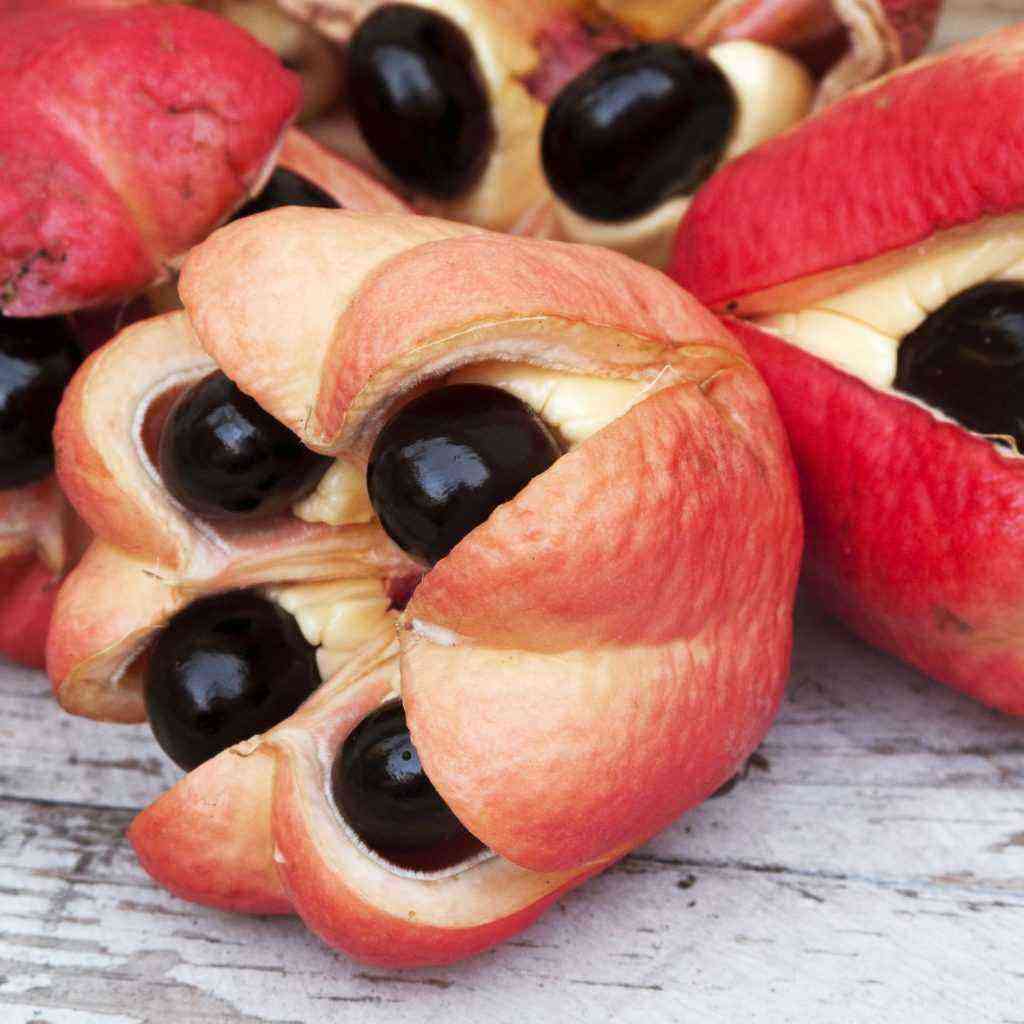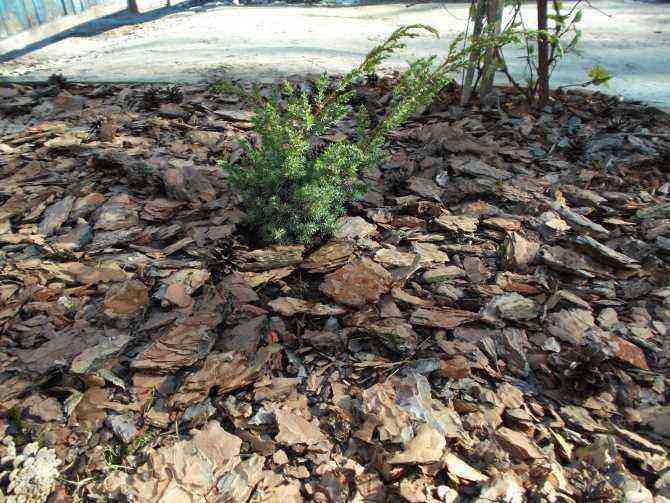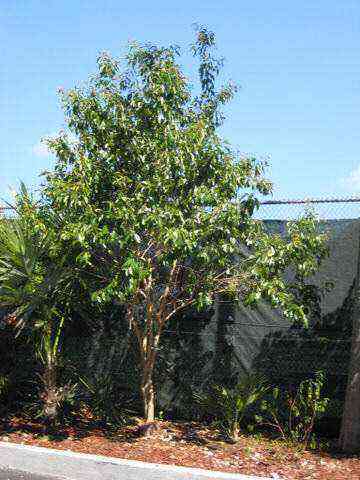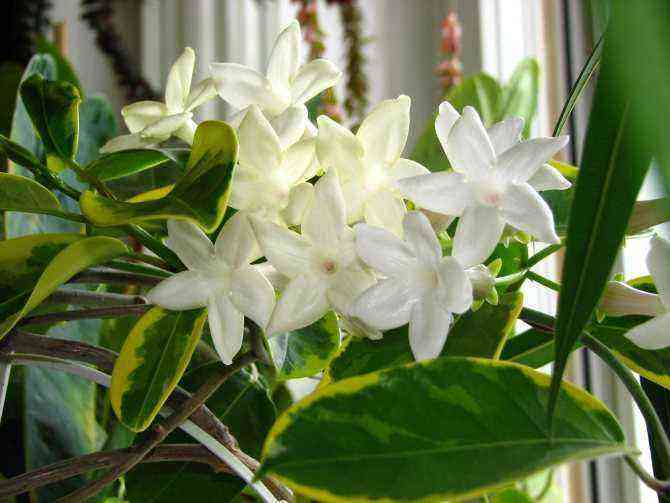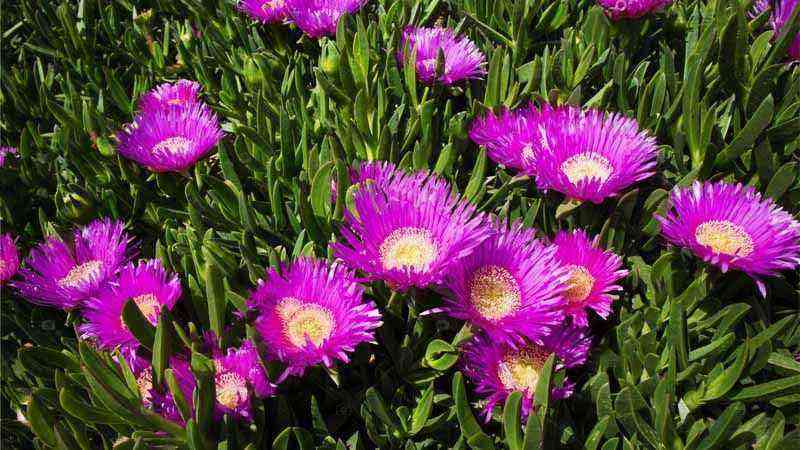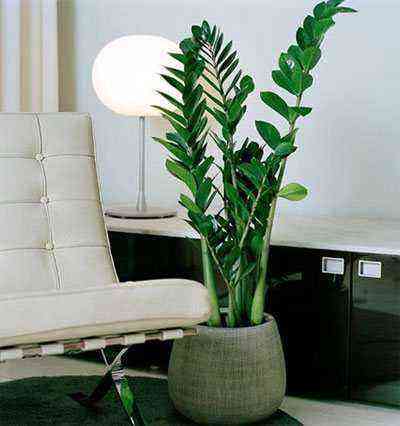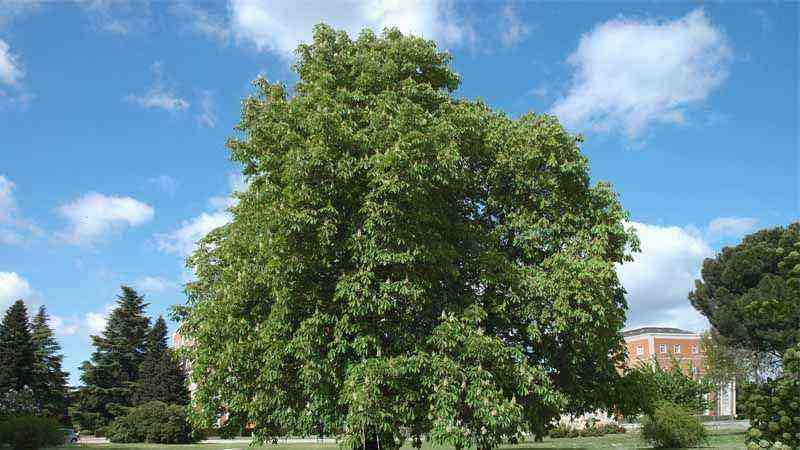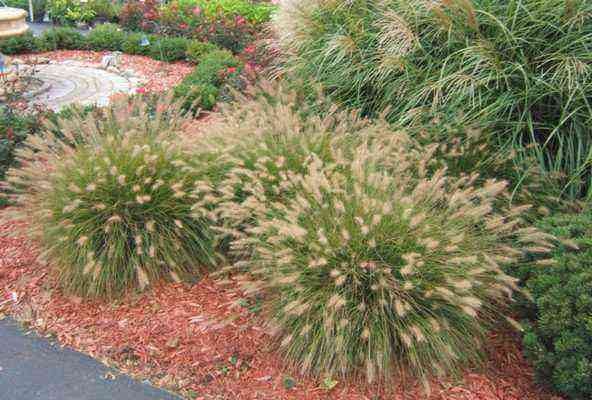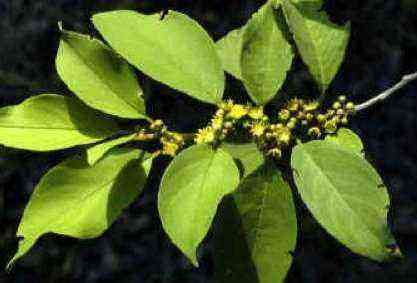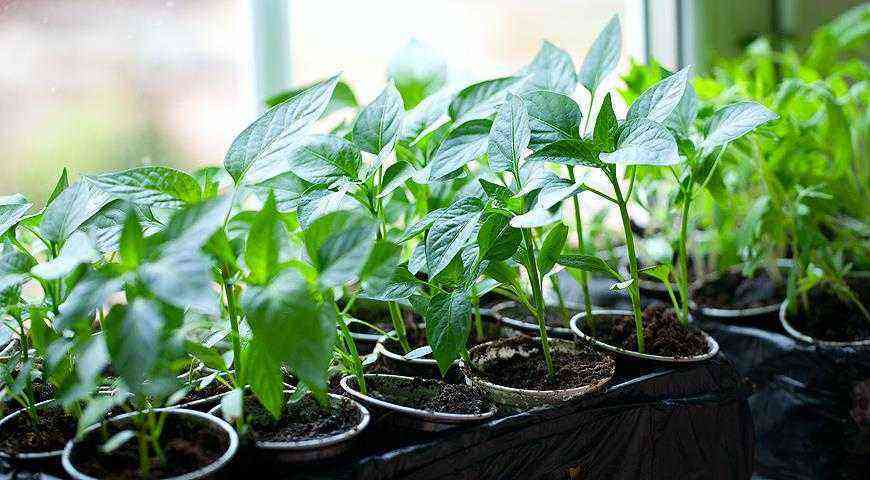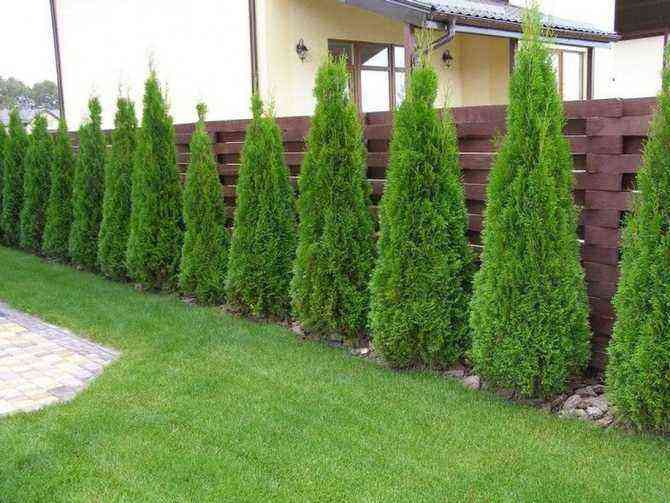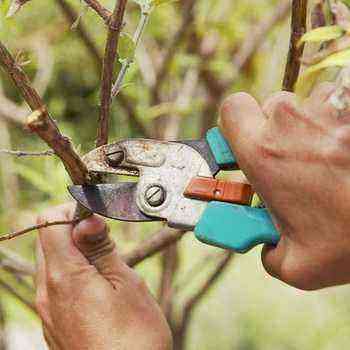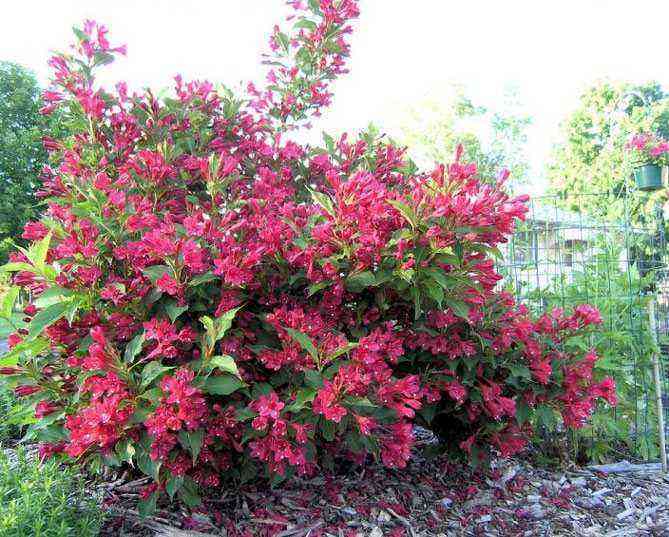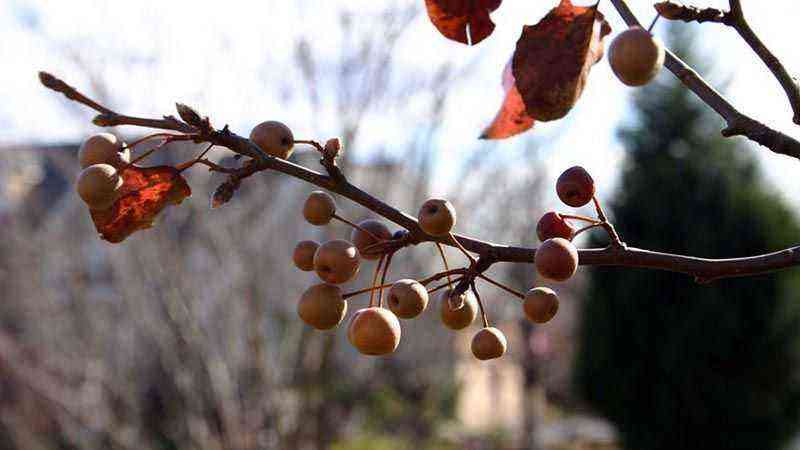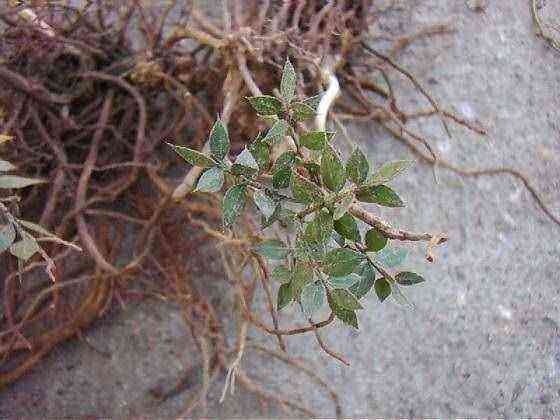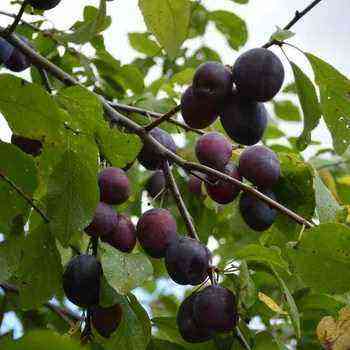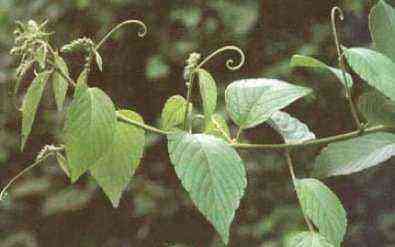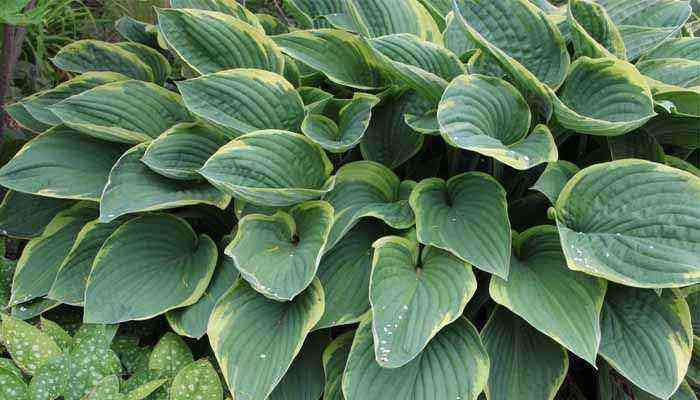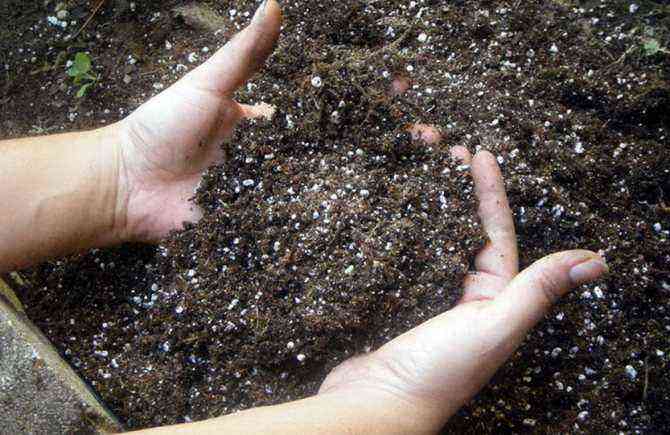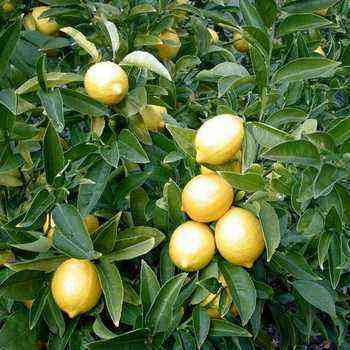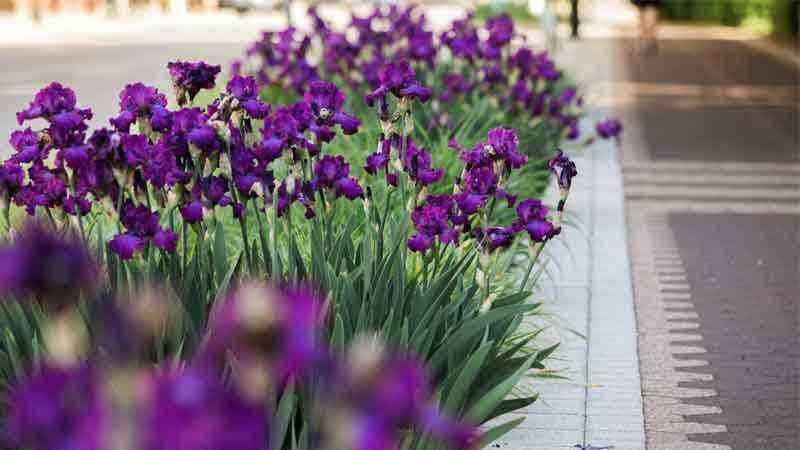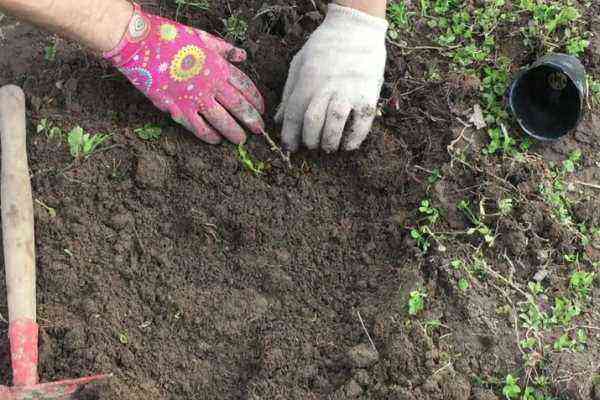Features and varieties of kochia
Kochia owes its name to the German botanist Welhelm Koch. The homeland of this plant is China, and the first mention of it occurs in the 17th century. In the arsenal of kokhia there are many “folk” names: summer cypress, bassia, prutnyak, broom.
By its nature, kochia is a highly branching evergreen dwarf shrub. Outwardly, the plant is very similar to a cypress or a small Christmas tree, for which it was nicknamed the summer cypress. The similarity is achieved through long thin leaves and a branched bush.
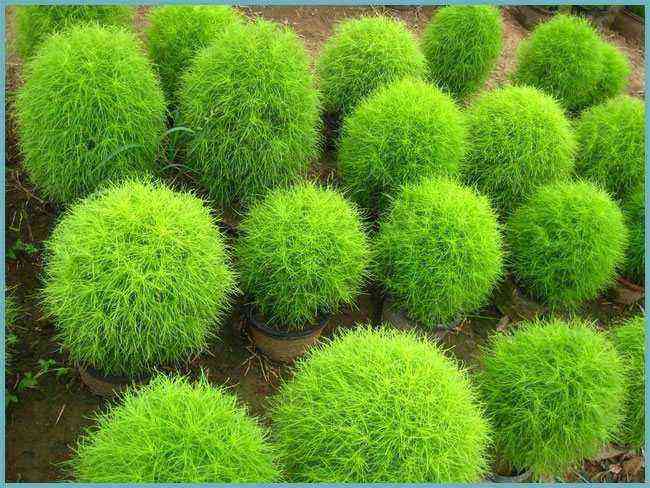
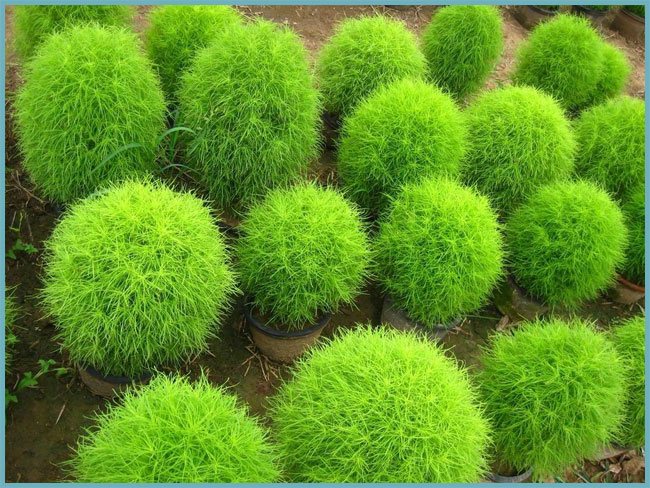
Cochia is very similar to a coniferous shrub and often replaces it in landscape design.
In the garden, kohija is easy to recognize by its green mass, but it has inconspicuous flowers. It is often difficult to even see them. Whitish tiny flowers hide in the axils of the leaves and do not represent any decorative value. The peculiarity of kohija is its pliability during pruning and long-term retention of its shape. Almost any shape can be created from dense bushes, and plants planted along the paths serve as a green border. In autumn, kochia changes the color of its leaves and looks even more attractive.
Cochia is in most cases an annual crop, but perennial varieties are also found.
Kokhia varieties:
- paniculate (coronal) kochia is an ornamental-deciduous species that includes annual and perennial subspecies. Used in decorative horticulture and as a technical culture;

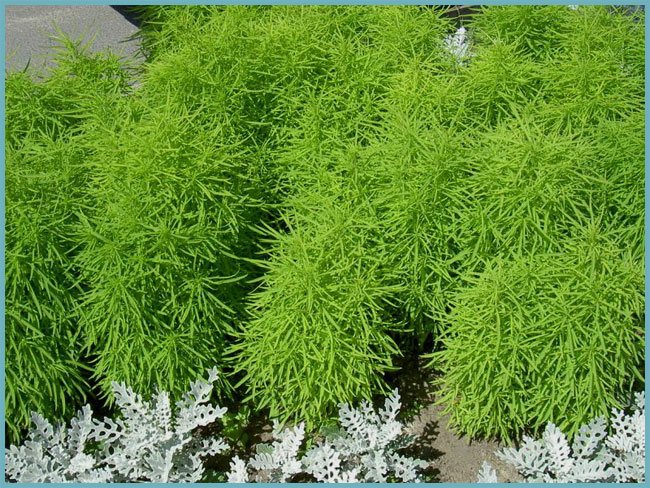
Cochia paniculata
- hairy kochia is an annual shrub, up to a meter high. In autumn, this type of kochia takes on a bright red color;
Hairy cochia
- Chaidlsa kokhia – plant height up to 60 cm, color throughout the entire growth period – light green;
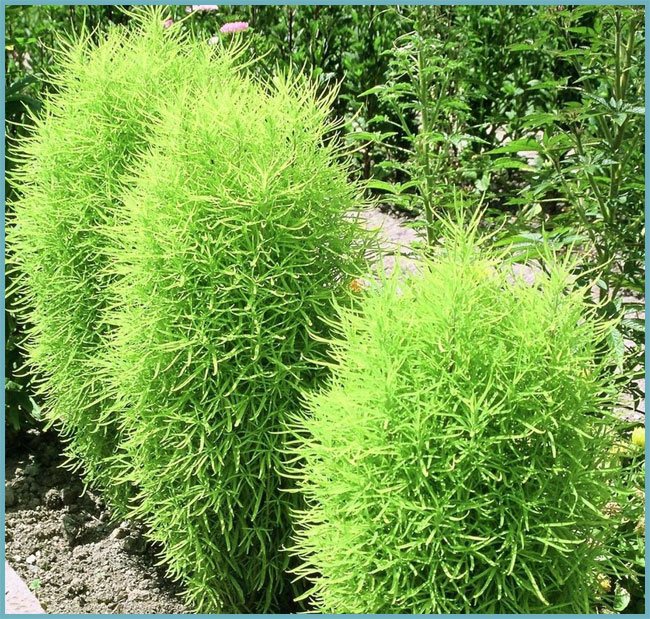
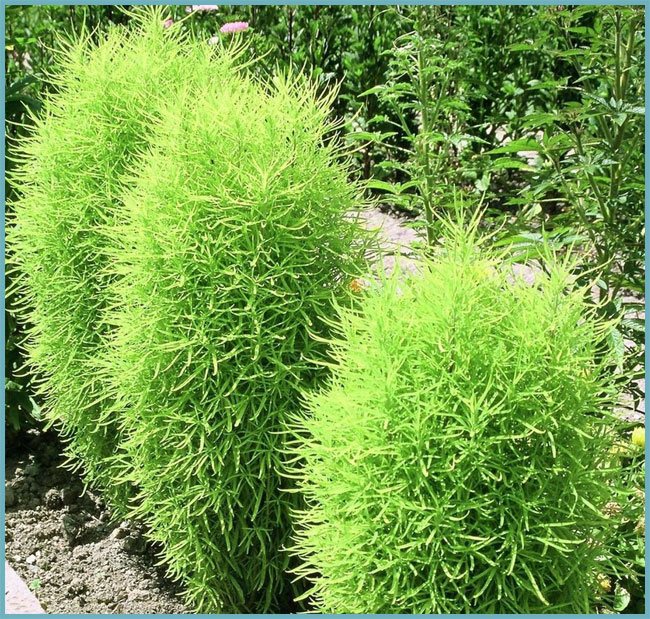
Chidles kohiya
- creeping kochia – squat semi-bush;
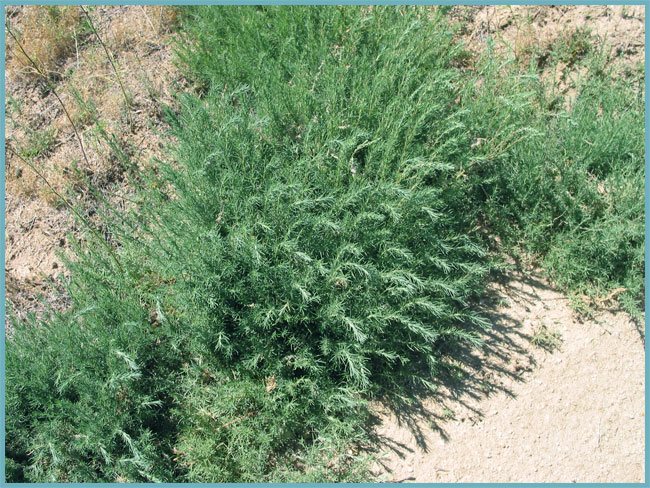
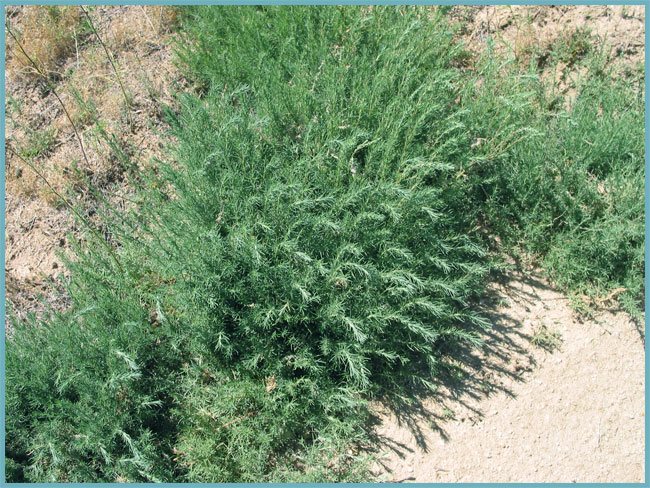
Creeping kochia
- woolly-flowered – “shaggy” cochia, covered with thick yellow-red villi;
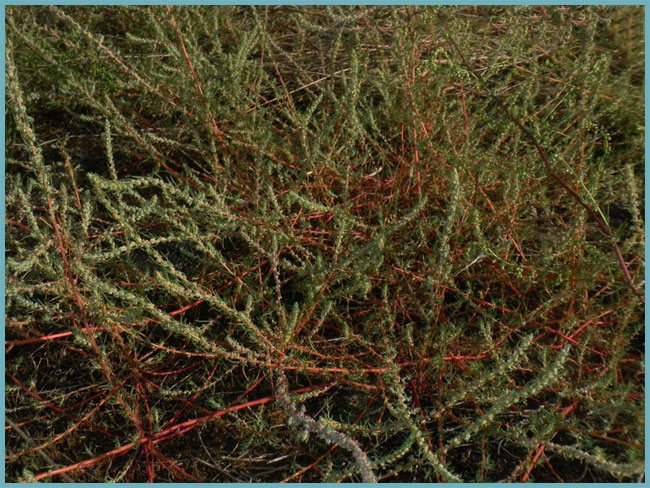
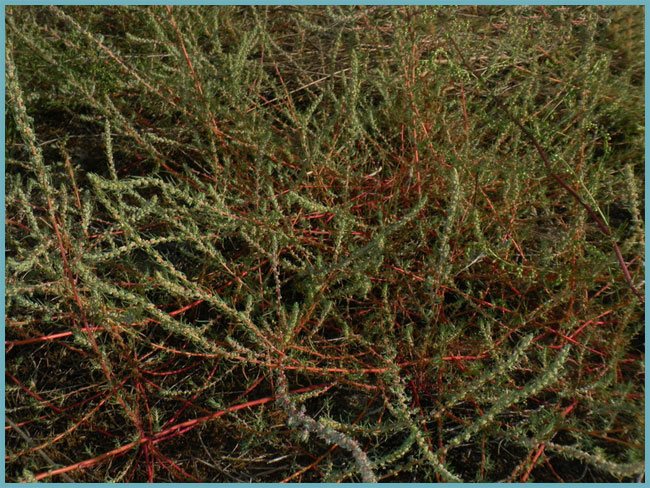
Woolly-flowered kochia
- dense-flowered – tall species of kochia. Due to the many white villi, it has a white tint.
Dense-flowered cochia
Features of growing kochia
This plant is grown by sowing directly into the ground, or through seedlings. There are a fairly large number of varieties that differ in color and size. Some have bright green leaves, some red, and some have an intense light green color that darkens over time, turning into a dark green. There are also varieties of kochia, whose leaves turn orange over time.
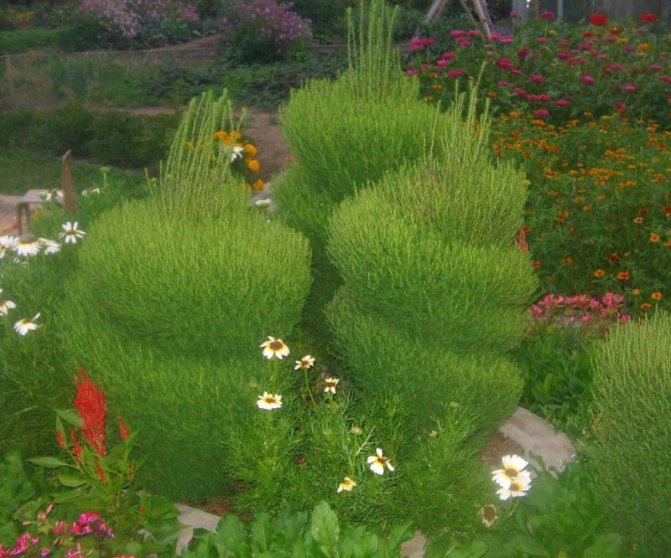
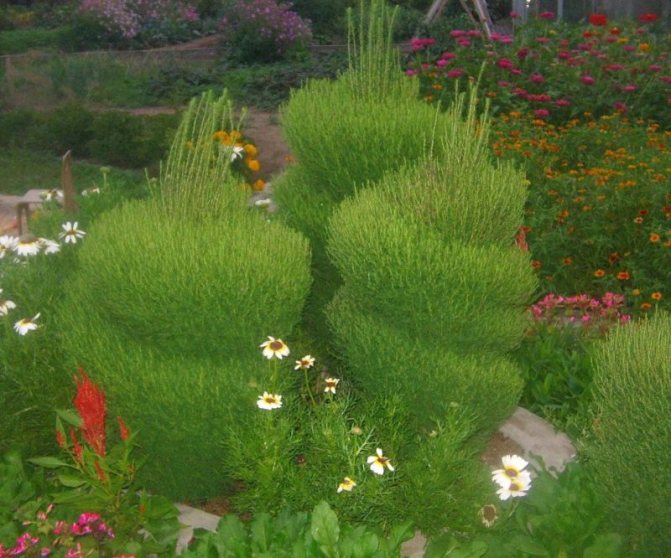
Planting and breeding kochii
Cochia reproduces only through seeds. The seeds are round, brown in color. Seed germination is always excellent. There are three ways to sow seeds:
- Seeds in a seedling container.
- Seeds in open ground.
- Self-seeded seedlings.
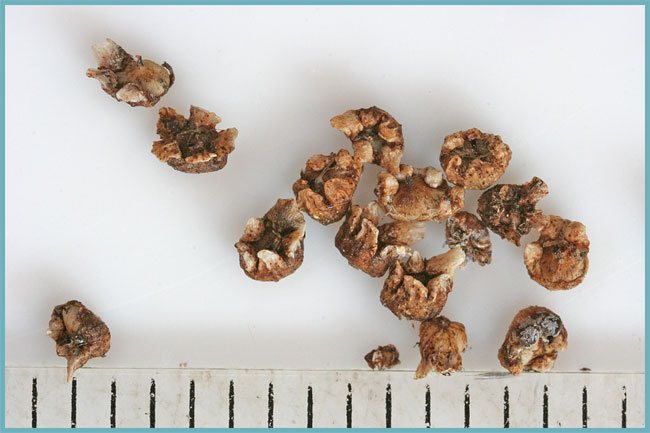
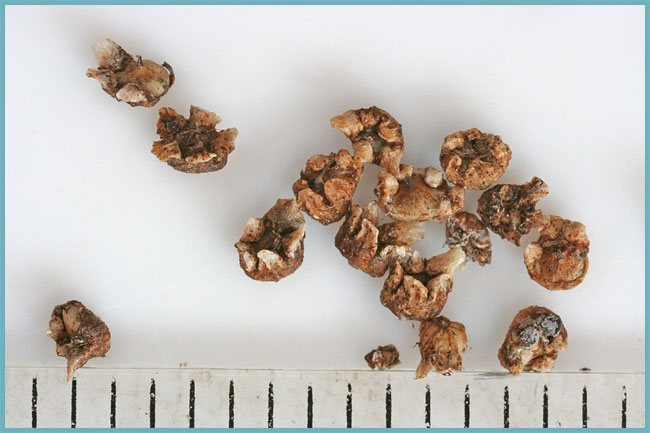
Seeds of kohii
Cochia seeds are sown for seedlings in early spring (March – April). The soil for growing kochia seedlings is balanced. Seeds shallow (1 cm) are embedded in moist soil. It is recommended to create a greenhouse effect by covering the containers with plastic wrap. Seeds germinate within 7 days, after which the film is removed.
Attention! Young shoots of kochia are not watered, but sprayed from a spray bottle, otherwise the plant will die.
Kokhia seedlings can hardly be called tender. It grows quickly without much hassle. When the seedlings reach 6-8 cm in height, and warm weather sets in outside, the seedlings are planted in open ground. The landing pattern depends on the desired result. For decorative borders and hedges, plants are planted 10-15 cm apart. When growing flower arrangements, the planting scheme is arbitrary.
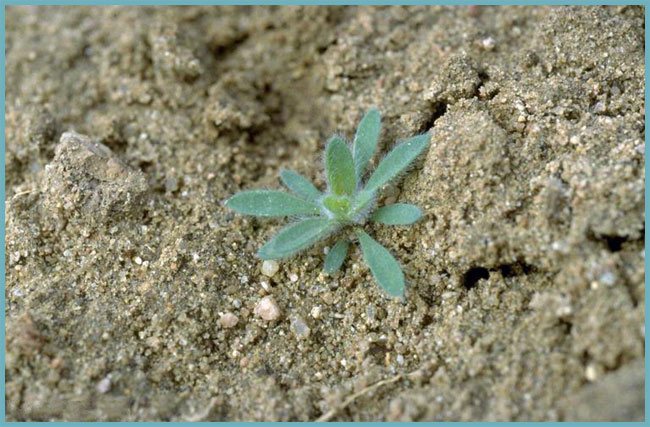

Rostock kohii
When sowing kochia seeds in open ground, they only need to be lightly tamped. Do not sprinkle it. For faster germination, the planting can be covered with foil, but not necessary. If the seedlings are too dense, the plantings are thinned out. Cochia is one of many self-seeding crops. To do this, simply leave a few adult plants for the winter in the garden. In the spring, new dense shoots will appear. Moreover, the seeds are carried by the wind, and kochia can grow even in the most unexpected places.
Advice! Do not rush to plant the kochii. It grows quickly, but late spring frosts will destroy this plant.
How and when to dive kohija seedlings
The timing of the picking of kochia seedlings should be chosen based on the appearance of the seedlings. If you see that they have two or three real leaves, then you should start the procedure.
You need to plant each plant in separate containers (cups, pots). The material can be made of plastic, peat. The optimal container diameter is 7-10 cm.
When picking, each seedling must be very carefully removed without damaging the roots. And transfer to the hole in a new container, carefully plant so that the roots do not bend, deepen to the cotyledonous leaves, cover with earth and shed well.
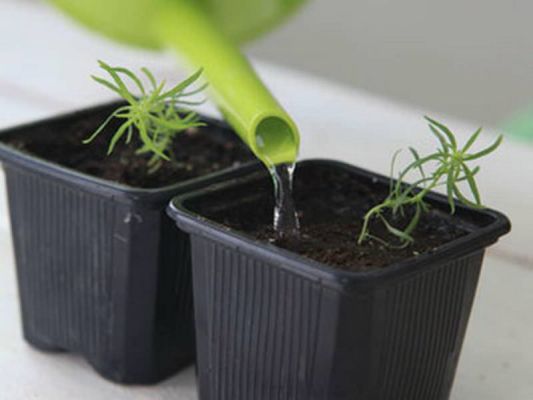
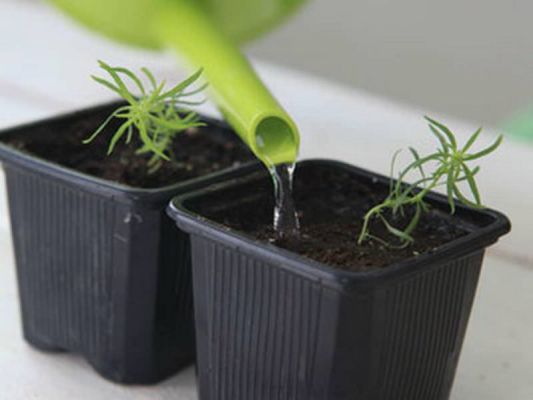
Advice! The first two to three days after the pick, it is recommended to shade the seedlings from direct sunlight.
Cochia care, diseases and pests
Kokhia is planted in a well-lit place, only slight shading is permissible. In the shade, culture grows large, lifeless.
Young seedlings need feeding, at least several times a month. Top dressing should be carried out with nitrogen fertilizers, since it is nitrogen that affects the growth of the green mass of the plant.
Watering the kohija must be done very carefully. It is better to underfill than overflow. The plant is able to withstand a short drought, but stagnant water is destructive for it.
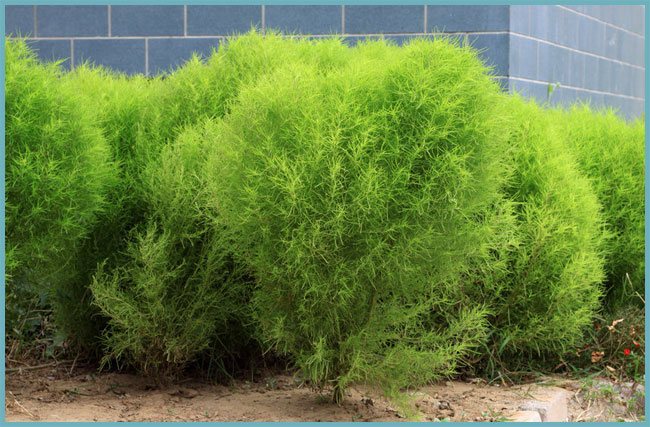
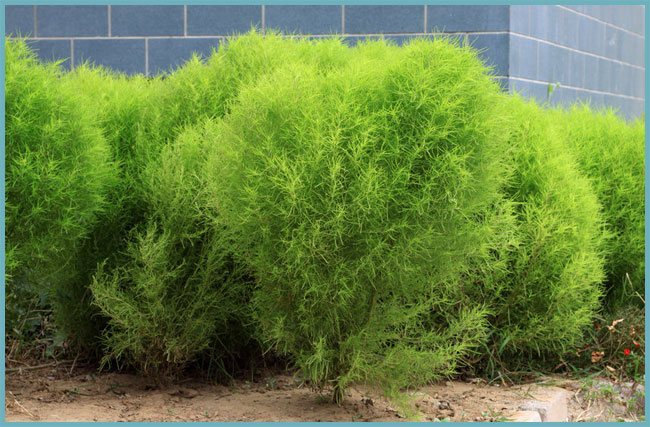
Avoid waterlogging the soil under the kochia
Pruning is also an important step in kochia care. It is carried out easily, with pruning shears or scissors. After pruning, the kochia keeps its shape for a long time.
Diseases of kochia are not terrible. She has strong immunity. But pests should be wary of. The spider mite infects the kochia quickly enough, therefore, having noticed the first signs of its activity, do not hesitate with the treatment with pesticides.
Description and characteristics of kohija
Kokhia is a perennial belonging to the Marev family. He first got divorced in East Asia, South Africa. In simple terms, it is called “summer cypress”, “izenya”, “annual cypress”, “prutnyak”.
The culture is planted on curbs, flower beds, fences. The bush grows quickly, only regular pruning is required.
Kochii are slender, lush, widely used in decorating country estates. The height of the bushes is 60-80 cm, depending on the variety. Pollen falls in early June, lasts until the first frost. The bushes have many thin, branched shoots. At the base there is an erect, woody stalk.
Many consider the plant to be coniferous, because of the narrow leaves that resemble needles. Emerald foliage is soft, pleasant to the touch, with pubescence. Young bushes are light green in color, but during pollen, they turn pinkish or crimson. Inflorescences are small, inconspicuous, collected in panicles. After pollination, tiny nuts grow. Each contains a seed that retains germination for 2 years.
Cochia combined with other plants in landscape design
The topic of using kochia in landscaping is endless. You can get ideas for arranging a flower bed from a photo on the Internet or turn on your own imagination. Kokhia plantings are used to design hedges, green borders, flower beds in personal plots and in urban landscaping. Summer cypress will be a decoration of a garden composition and even an alpine slide.
Kokhia will dilute any colors with its greenery. Yellow lush marigold hats on a green background of kohija look gorgeous. The same effect is achieved from planting kochia in a rose garden. Alpine slide will sparkle with new colors when combining kochii with lavender.
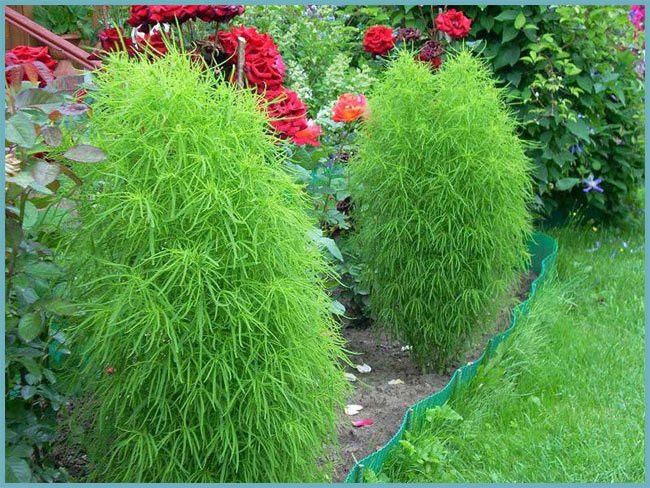
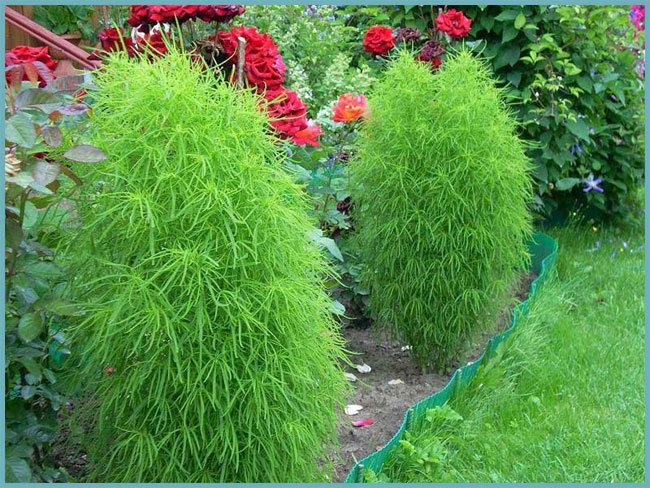
Cochia combined with a rose
Particular attention, as an element of landscape design, should be paid to the figures from the kohija. Their variety is simply amazing. On the web, there are photos of kochii in the form of a heart, nesting dolls, snakes, complex geometric shapes. A zigzag hedge or a wavy border, bizarre figures or strict geometric shapes – everything is possible with the use of grown kohija.
With the onset of autumn, flower beds with kochia are transformed again. The cochia chameleon property can be taken into account in landscape design and used to its advantage. In summer, kohija can serve as a green background, and in autumn it can transform into red, yellow or orange accents of a flower bed. Combined with the chrysanthemum queen of autumn, the effect is amazing.
Florists also respect kohija. Cut twigs are used to create bouquets. Dried sections are painted by florists in different colors and used in “dry” compositions.
Application of kohii
Kokhia is used not only as an ornamental plant. It can serve as food for animals, and dried branches will find their use on the farm as a broom. Culinary experts add cochia to delicious first courses.
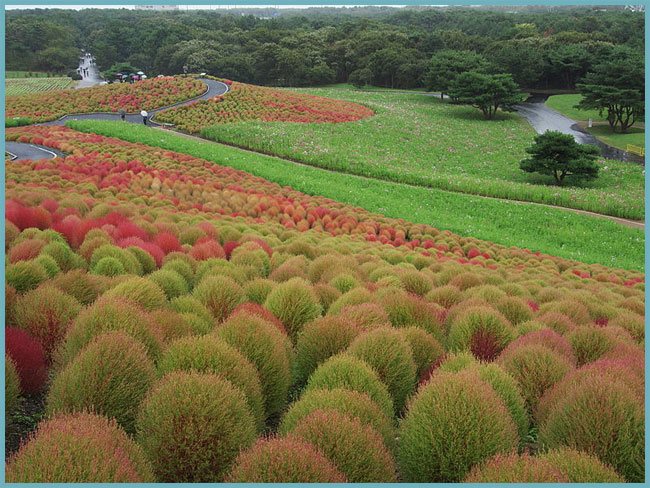
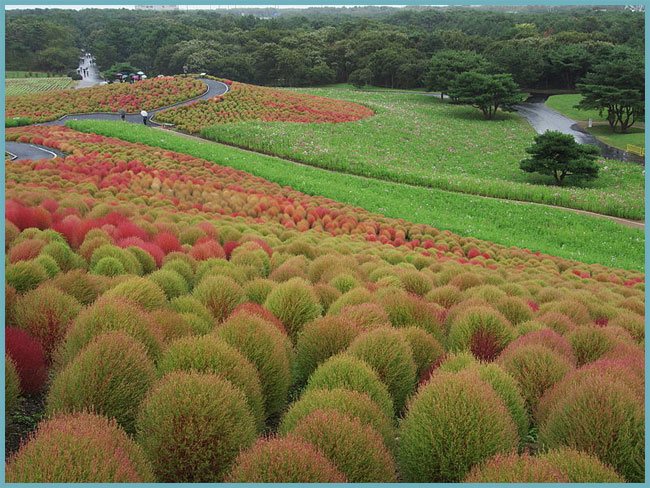
Cochia is not only a beautiful plant, but also a useful plant for humans.
In alternative medicine, kochia has also found its niche. Traditional healers use kochia in the treatment of eczema and other skin diseases, inflammatory processes. The diuretic and diaphoretic properties of kochia help to cope with edema, and the cardiac stimulating effect will help with heart disease.
As you can see, planting and caring for kohija outdoors does not require much effort. The plant is noteworthy for its wide range of uses. Unpretentiousness and resistance to all diseases makes caring for cochia a pleasure.
